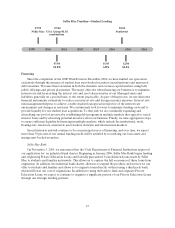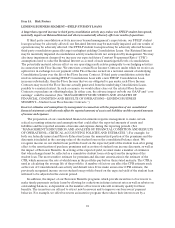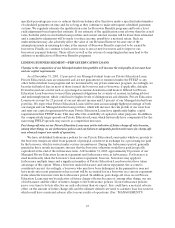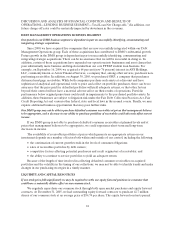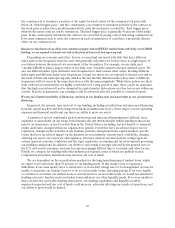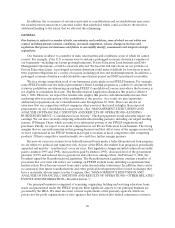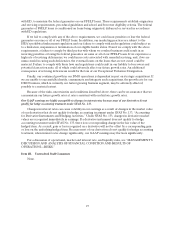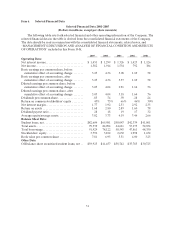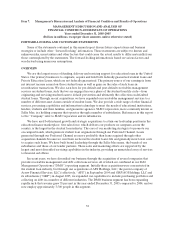Sallie Mae 2005 Annual Report Download - page 35
Download and view the complete annual report
Please find page 35 of the 2005 Sallie Mae annual report below. You can navigate through the pages in the report by either clicking on the pages listed below, or by using the keyword search tool below to find specific information within the annual report.25
the counterparty to terminate a portion of the equity forward contract if the common stock price falls
below an “initial trigger price” and the counterparty can continue to terminate portions of the contract as
the stock price reaches lower predetermined levels, until the stock price reaches the “final trigger price”
whereby the entire contract can be terminated. The final trigger price is generally 50 percent of the strike
price. If the counterparty terminates the contract, we can settle by paying cash or delivering common stock.
If we issue common stock to settle the contracts in such circumstances, it could have a materially dilutive
effect on our common stock.
Because we fund most of our daily reset commercial paper-indexed FFELP student loans with daily reset LIBOR
funding, we are exposed to interest rate risk in the form of basis risk and repricing risk.
Depending on economic and other factors, we may fund our assets with debt that has a different
index and/or reset frequency than the asset, but generally only where we believe there is a high degree of
correlation between the interest rate movement of the two indices. For example, we use daily reset
3-month LIBOR to fund a large portion of our daily reset 3-month commercial paper indexed assets. We
also use different index types and index reset frequencies to fund various other assets. In using different
index types and different index reset frequencies to fund our assets, we are exposed to interest rate risk in
the form of basis risk and repricing risk, which is the risk that the different indices may reset at different
frequencies will not move in the same direction or with the same magnitude. While these indices are short-
term with rate movements that are highly correlated over a long period of time, there can be no assurance
that this high correlation will not be disrupted by capital market dislocations or other factors not within our
control. In such circumstances, our earnings could be adversely affected, possibly to a material extent.
We may face limited availability of financing, variation in our funding costs and uncertainty in our securitization
financing.
In general, the amount, type and cost of our funding, including securitization and unsecured financing
from the capital markets and borrowings from financial institutions, have a direct impact on our operating
expenses and financial results and can limit our ability to grow our assets.
A number of factors could make such securitization and unsecured financing more difficult, more
expensive or unavailable on any terms both domestically and internationally (where funding transactions
may be on terms more or less favorable than in the United States), including, but not limited to, financial
results and losses, changes within our organization, specific events that have an adverse impact on our
reputation, changes in the activities of our business partners, disruptions in the capital markets, specific
events that have an adverse impact on the financial services industry, counter-party availability, changes
affecting our assets, our corporate and regulatory structure, interest rate fluctuations, ratings agencies’
actions, general economic conditions and the legal, regulatory, accounting and tax environments governing
our funding transactions. In addition, our ability to raise funds is strongly affected by the general state of
the U.S. and world economies, and may become increasingly difficult due to economic and other factors.
Finally, we compete for funding with other industry participants, some of which are publicly traded.
Competition from these institutions may increase our cost of funds.
We are dependent on the securitization markets for the long-term financing of student loans, which
we expect to provide more than 70 percent of our funding needs. If this market were to experience
difficulties, if our asset quality were to deteriorate or if our debt ratings were to be downgraded, we may be
unable to securitize our student loans or to do so on favorable terms, including pricing. If we were unable
to continue to securitize our student loans at current levels or on favorable terms, we would use alternative
funding sources to fund increases in student loans and meet our other liquidity needs. If we were unable to
find cost-effective and stable funding alternatives, our funding capabilities and liquidity would be
negatively impacted and our cost of funds could increase, adversely affecting our results of operations, and
our ability to grow would be limited.


